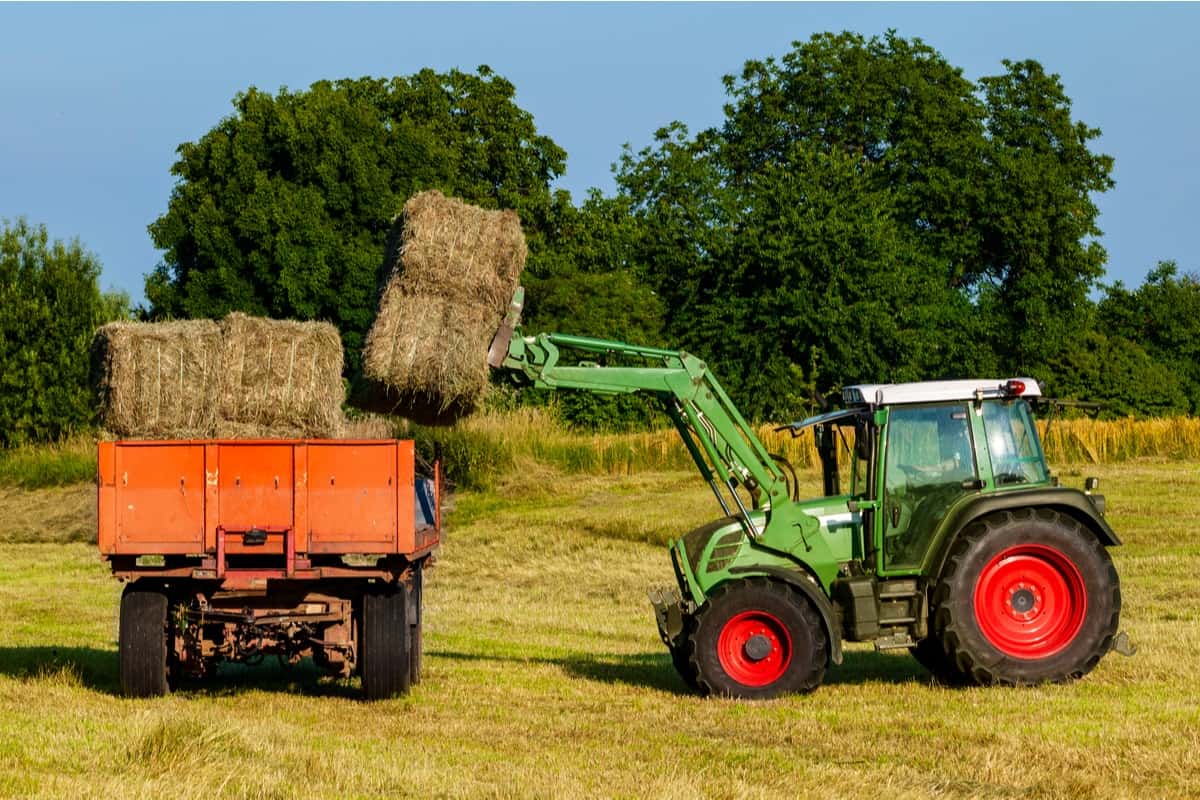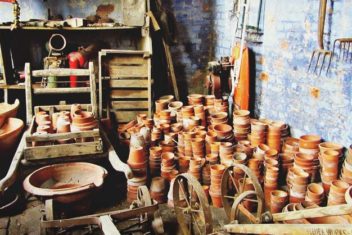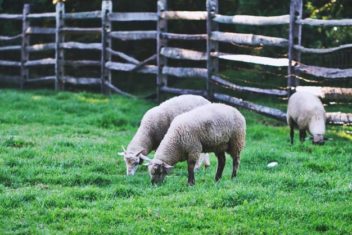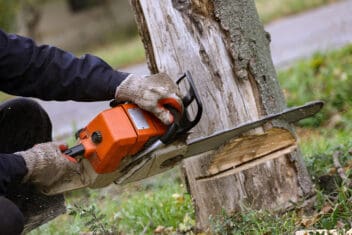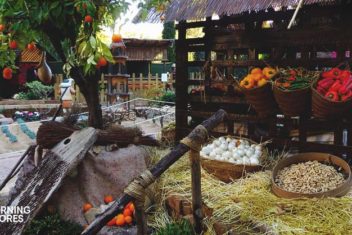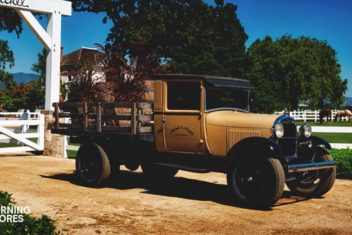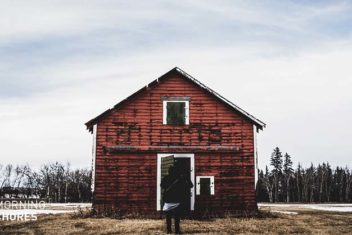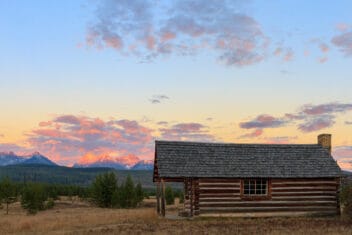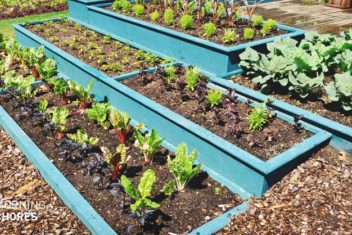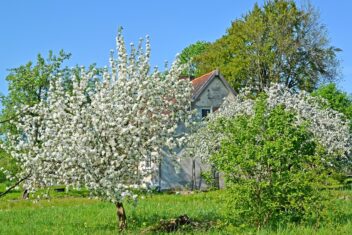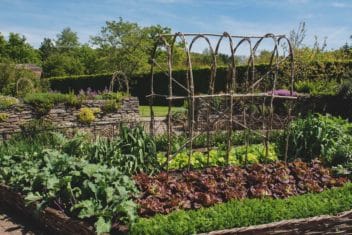Are you shopping around for hay for your horses, sheep, cattle, or goats?
It might seem like buying hay is straightforward enough but there are actually quite a few details that need to be taken into consideration.
Where do you plan on storing the hay? What types does your specific species of livestock need? What cutting is it from?
If your brain feels overwhelmed and boggled by these details, pause and take a deep breath. In this article, I’ll walk you through everything you need to know to make the right decisions.
Tips for Buying Hay
Buying hay can be challenging – especially if you’re trying to buy hay from a seller online, sight unseen. Here are a few tips to help you weed out what to look for.
1. Color
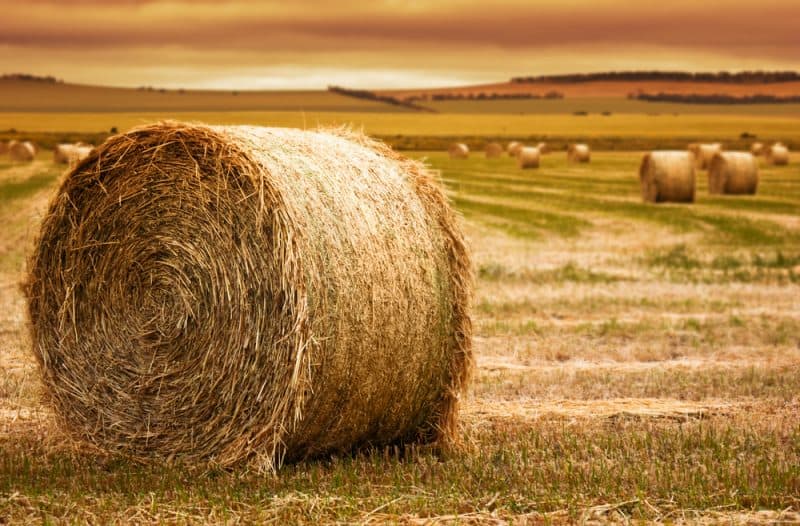
Color can tell you how long a bale of hay has been stored, among other things. The best quality hay will be a silver-green, while a deeper green will show that a bale of hay was in storage for quite a while. Brown hay, on the other hand, is hay that was cut far later in the season or allowed to dry too much.
Hay that isn’t the ideal color can make your livestock sick (with some animal species more vulnerable than others), so pay attention to this detail on your hunt.
Another color to be on the lookout for is yellow. Hay often becomes yellow (or sun-bleached) if it is stored in the sun. That’s usually not a major issue. However, hay can also become yellow because it was exposed to some rain before it was baled. Make sure it’s not moldy if that’s the case.
2. Storage Length
You must know how long a bale of hay was stored, as this can affect the hay’s nutritional value. It’s not just the length of time that matters, either, but the conditions. Hay that was stored improperly can become moldy or musty and can cause serious health issues for your livestock.
3. Delivery
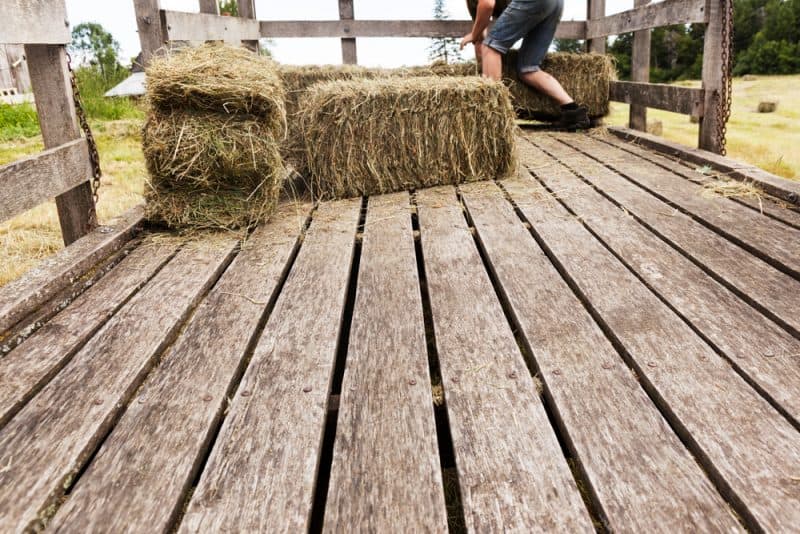
Do you have a way to get the hay from Point A to Point B? If you’re buying round bales, you’re going to need a way to load and unload them. It might be worth it to see if the farmer from whom you are buying hay offers delivery (even if it’s for an extra surcharge or fee).
4. Different Cuttings
It’s important to understand which cutting your hay came from because each is quite different. Earlier cuttings have larger stems because the hay grows faster earlier in the season. Mid-season, or second cut, has smaller stems, while the last cutting is typically clippings. Each cutting has different nutritional properties that offer its own unique benefits to your animals.
5. Bale Size

How big is the bale you’re buying? While “bale” is a uniform measurement with both square and round bales available, keep in mind that not all farmers grow, bundle, and produce their bales the same way. You’ll have to know exactly how much hay you are buying to provide properly for your livestock.
6. Where It Came From
Especially if you are feeding alfalfa hay, it’s vital to know where your hay came from. Blister beetles, for instance, are common in many portions of the US. Blister beetles are extremely toxic to horses and even just a handful can kill a horse.
7. Stem Size
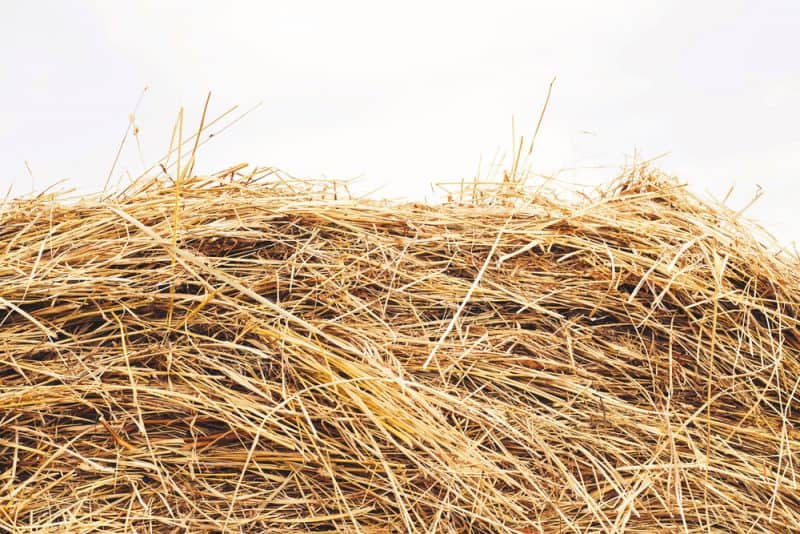
In addition to the bale size, pay attention to the stem size. Stems that are flexible and softer tend to be easier to digest. Hay with thicker, coarser stems indicates it was more mature and took longer to be dry enough for a harvest.
8. Moisture Content
The moisture content in the hay you buy will probably vary depending on where you live and what cutting the hay was. In high-humidity areas, hay takes longer to harvest – and might be more likely to become moldy.
You can buy tools to test the moisture content of your hay, which may be worth the investment if you buy quite a lot.
Should I Test My Hay?
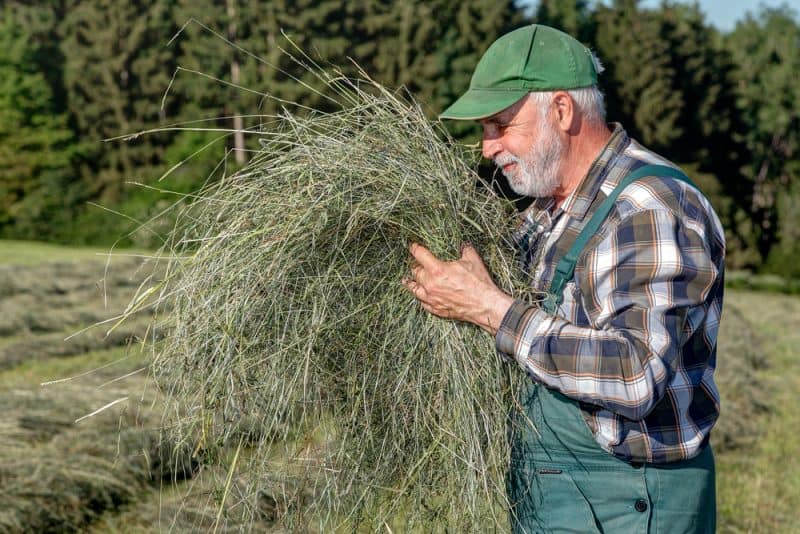
Hay testing isn’t something that most farmers do regularly. However, if you want to provide your livestock with the proper nutrient content for their life stage and species, hay testing can give you a clearer picture.
The easiest way to do this is to send a sample of your hay to a lab that is certified by the Forage Testing Council certification process. You will have to test for things like crude proteins, starches and sugars, and major minerals.
Testing for starches and sugars can be especially beneficial if you have lots of young or pregnant animals since it’s important for these individuals to consume more balanced quantities of these two items.
Best Types of Hay By Species
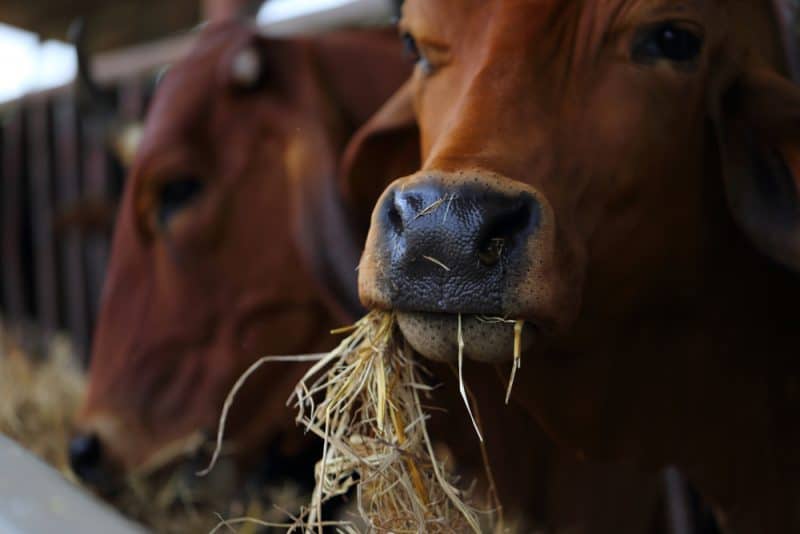
When you’re shopping for hay for your animals, one of the most important things to consider is which kinds of animals you are feeding. Different animals can tolerate different types of hay. Here’s a quick overview of what to look for by species.
1. Cattle
Cattle vary a bit in what kind of hay they tolerate depending on their age. Lactating cows, for instance, require high-protein hay, such as grass hay with legume hay added in for additional protein and vitamin A.
Younger calves might have a tough time with coarser hays, like alfalfa and grass, while older beef cattle can eat just about any kind of hay – even that which is a bit dusty or moldy.
Dairy cows require the most nutritious hay – and lots of it. Generally, finer alfalfa is what you are going to need for a dairy cow.
2. Horses
Horses are quite particular in their hay needs. Mature horses need far less calcium and protein than younger horses or mares that are nursing their foals. Alfalfa or grass is usually fine as long as it has been stored appropriately but any mold or dust can cause serious health problems for your horse.
Therefore, if you’re looking to buy hay for a group of horses, you must get as much information as possible about how it was cut and stored.
3. Goats
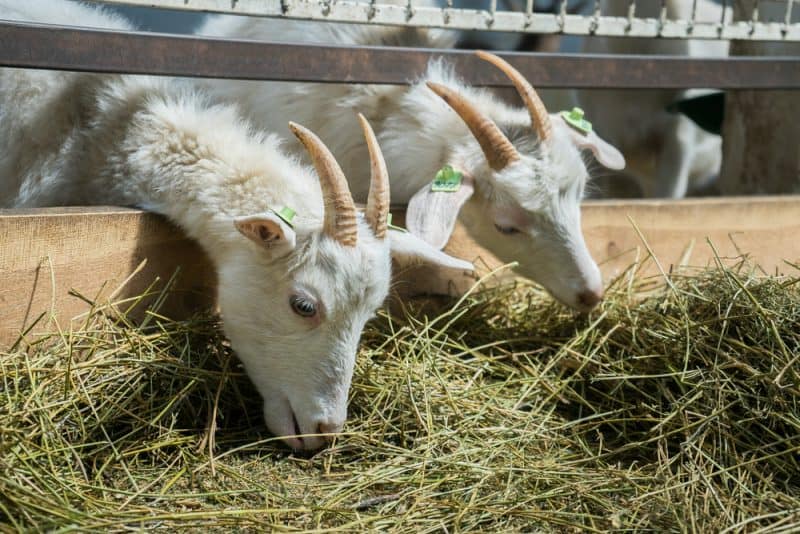
These animals are known to eat just about anything while they’re out grazing in the pasture so it goes without saying that the hay can be quite diverse, too. Goats will even handle weedier hays with ease.
4. Sheep
Sheep are similar to goats in the type of hay they prefer. There’s quite a bit of variation here among breeds and individuals within single breeds. Some sheep breeds prefer finer, leafier grasses and alfalfa compared to coarser options, though some, like Icelandic sheep, couldn’t care less about how coarse the hay is.
For lambs, you’ll tend to choose legume hay that was harvested while still growing. The stems will be easier for your lambs to eat.
First-Time Buyer? Ask Questions!
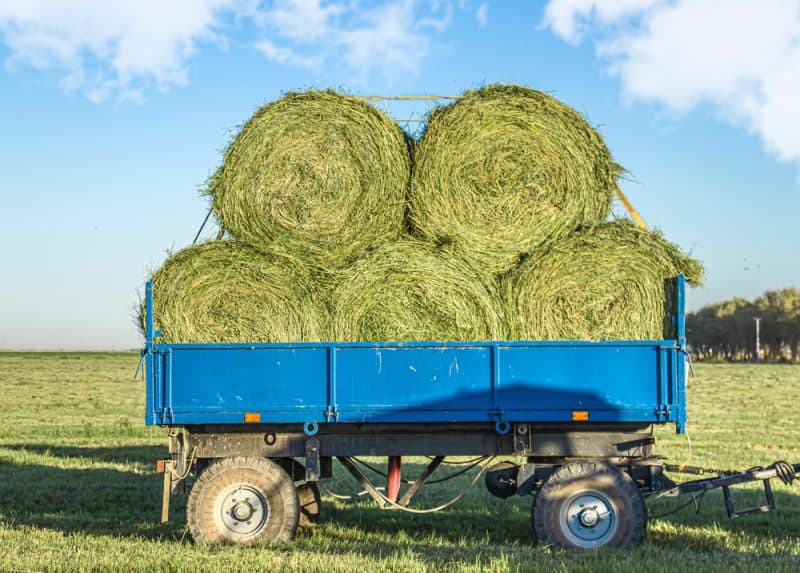
If you’re new to buying hay, don’t panic. I know it can be overwhelming the first time around – and you might not be sure what to look for. However, you must ask lots of questions from the farmer from whom you are buying.
Farmers sell hay to make extra money and support other local farmers – they don’t mind answering questions, especially if you’re thoughtful about which ones you choose to ask.
While a good listing for hay will have all the details you need to make an informed decision about whether you’re going to buy (such as a variety of pictures, information about the size of the bales, and where the bales were harvested from), sometimes, details fall through the cracks. Don’t be afraid of reaching out with questions!
Over time, you may find yourself as lucky as I am – we are fortunate to have a farmer who supplies us with hay for our sheep every single year. He’s great about giving us the details we need to feed our flock worry-free.
Another challenge you might have, is finding hay in winter. Here we have a special article about how to find hay in winter.
Now that you know everything there is to know about buying hay, all that’s left is to get out there and do it. Happy shopping!
